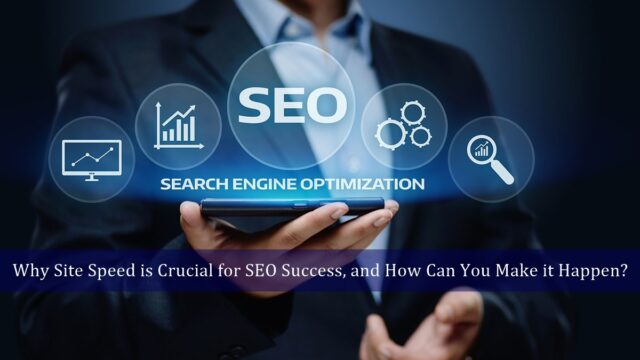The loading speed of a site is a critical metric for its proper SEO functioning. It is a huge ranking factor for a website’s SEO success as it determines the site’s ranking in search. This performance statistic determines how fast a user can check the content from a respective website in the given search results. In general, it is a massive indicator of a website’s user experience. Pages that load quickly will meet a user’s requirements. In this article, one can get to know about the crucial importance of a site’s speed for SEO success and what are the following steps need to be taken to make it happen.
Impact on User Engagement
Contents
Site speed has a large impact on digital marketing strategies, but what it targets is the audience and conversion rates. User engagement affects SEO. Social ads paid search, large media files, and a good hosting plan are the basic and important reasons that play a crucial role in user interaction. Upgrading and enhancing these points show the superior performance of a website. Additionally, if a website is getting enough reach, it’s because the information provided on that page influences the visitors. You can contact Utah Search Engine Optimization for further guidance on this topic.
Compact the Clumsy Code
The bulkiness of the code can hinder the speed that directly affects user experience in a website. As the page load increases simultaneously, the bounce rate also increases. Adding unnecessary lines of code can slow the site’s speed. Whether the code is for sign-up forms, analytics, affiliates, or incompetent HTML5/CSS/JavaScript, it should be condensed, and the size of the files must be reduced to decrease the rendering time. Poorly-written scripts also hamper the site’s speed which reduces user engagement. Using tools such as Autoptimize, one can optimize the JavaScript files.
Enhance Visual Content
Visual content is practically a key element of a website’s ranking factor. Text-based contents usually load very quickly on most websites; however, images seem to take more time to load on a website. While it is an effective measure to engage potential customers, it can affect a site’s speed. A website that consists of a massive number of images and all graphic contents significantly increments the dimension of a website that can slow the site’s speed which may eventually increase the bounce rate. To overcome this situation, it is necessary to reduce the size of the dozens of media files that have been uploaded to a website to provide a better user engagement.
Make Use of Speedy Servers
If a website takes more than three seconds to load, half of the visitors will lose their interest before they can arrive. It alone becomes a big blow for possible conversions. No matter how rich the content is, the velocity at which the server is delivering the content will have a genuine impact on a website’s loading time. Using a steadfast virtual personal server will increase the load time, and lower the bounce rates. Choosing the right and affordable hosting plan will reduce the server response time. It is recommended to use the dedicated server hosting plan as one does not need to share the resources and is in charge of all maintenance.
Conclusion
Site speed remains a huge ranking determining factor used by many top search engines. By fixing the site cracks and improving the load time accordingly, it will grab the attention of a customer and thus satisfy user requirements. The faster the site loads, the greater will be the conversion rates.


